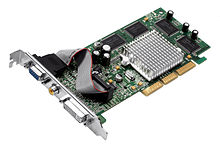Agp Slot Full Form

Stands for 'Accelerated Graphics Port.' AGP is a type of expansion slot designed specifically for graphics cards. It was developed in 1996 as an alternative to the PCI standard. Since the AGP interface provides a dedicated bus for graphics data, AGP cards are able to render graphics faster than comparable PCI graphics cards.
Agp Slot Full Form Download
Like PCI slots, AGP slots are built into a computer's motherboard. They have a similar form factor to PCI slots, but can only be used for graphics cards. Additionally, several AGP specifications exist, including AGP 1.0, 2.0, and 3.0, which each use a different voltage. Therefore, AGP cards must be compatible with the specification of the AGP slot they are installed in.
Since AGP cards require an expansion slot, they can only be used in desktop computers. While AGP was popular for about a decade, the technology has been superseded by PCI Express, which was introduced in 2004. For a few years, many desktop computers included both AGP and PCI Express slots, but eventually AGP slots were removed completely. Therefore, most desktop computers manufactured after 2006 do not include an AGP slot.
Updated: November 20, 2015
Agp Slot Full Form Code

Agp Slot Full Form Definition

AGP: Accelerated Graphics Port AGP is an abbreviation of the 'Accelerated Graphics Port'. It was created and developed as a high-speed point-to-point channel for putting together a video card to a system of the computer, first and foremost to help out and support the acceleration of 3D computer graphics. AGP Pro is a physical specification aimed at satisfying the needs of high-end graphics card manufacturers, who are currently limited by the maximum electrical power that can be drawn by an AGP card (about 25W). AGP Pro caters for cards that draw up to 100W, and will use a slightly longer AGP slot that will also take current AGP cards.
Stands for 'Accelerated Graphics Port.' AGP is a type of expansion slot designed specifically for graphics cards. It was developed in 1996 as an alternative to the PCI standard. Since the AGP interface provides a dedicated bus for graphics data, AGP cards are able to render graphics faster than comparable PCI graphics cards.
Like PCI slots, AGP slots are built into a computer's motherboard. They have a similar form factor to PCI slots, but can only be used for graphics cards. Additionally, several AGP specifications exist, including AGP 1.0, 2.0, and 3.0, which each use a different voltage. Therefore, AGP cards must be compatible with the specification of the AGP slot they are installed in.
Since AGP cards require an expansion slot, they can only be used in desktop computers. While AGP was popular for about a decade, the technology has been superseded by PCI Express, which was introduced in 2004. For a few years, many desktop computers included both AGP and PCI Express slots, but eventually AGP slots were removed completely. Therefore, most desktop computers manufactured after 2006 do not include an AGP slot.
Updated: November 20, 2015